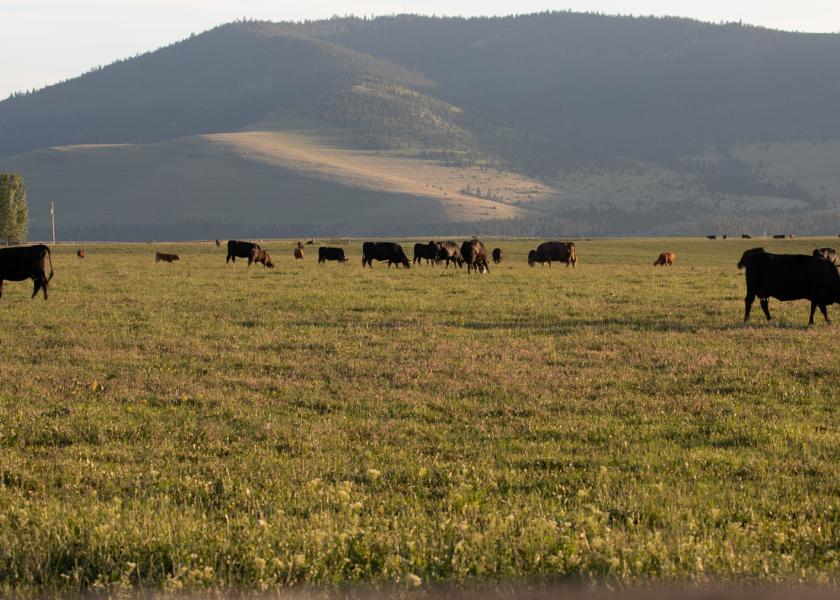Timeless Herd Efficiency Strategies for Today’s Market

As a nutritionist and beef technical consultant, the “why” part of my work gets really exciting when I have a front row seat to a client’s business breakthrough—when producers achieve tangible results that impact their cow-calf operations today and for generations to come.
On a macro level, increasing fertilizer prices, drought, policy changes and the possibility of a recession are at the forefront of most industry discussions right now. As someone who assesses these shifts over time and how they impact producers, they are beginning to ask how they can proactively plan for the months ahead.
What tends to surprise yet alleviate concerns for most operations is that a humble return to fundamental practices actually supports stability and growth in uncertain economic times. With a nod to the old adage “There's no need to reinvent the wheel” along with embracing innovative technologies, we can strike a powerful combination with nutritive value precision and feed performance tools.
These are the two fundamental steps I’m currently walking producers through as we near the close of 2022 and look toward 2023 planning:
- Step 1: Assess your pasture’s current nutritive value with precision.
- Step 2: Create a personalized supplementation plan to meet business goals and herd health needs.
Step 1: Evaluate your pasture’s nutritive value
A rule of thumb that many cow-calf producers live by is to provide their herd with a nutritional supplement once a pasture forage turns brown, signaling its dormancy phase or drought conditions. The rule is accurate and helpful, but I prefer to gather a precise read on forage quality and quantity so that we know exactly when it lacks the full nutritive value required by the cow. The importance of this precision is magnified when resources become limited and/or expensive. Often the supplementation of energy, protein or both is needed well before forage appears brown to ensure cows remain in an ideal body condition for reproductive optimization of the herd.
Local resource professionals, whether through an extension,or a nutritionist-consultant, can analyze and monitor forage quality to determine exactly when forage nutrients fall below your cows’ needs. An accurate read on nutritive value ensures pasture productivity is maximized for your cows and calves throughout seasonal shifts and changes.
Step 2: Create a personalized supplementation plan
With a 360-degree view of pasture nutrient production, it may be time to include a technology in the supplement to improve feed efficiency. With tools like Rumensin®, you can reduce feed intake by 5% to 10% while maintaining production equating to a $20-30 per cow opportunity during the feeding season. This is financially meaningful especially when input resources are limited, as we experience drought conditions and hay shortages in many areas of the U.S. Improving feed efficiency with Rumensin is more valuable in these difficult conditions than in years with plentiful rainfall or inexpensive feed and I am frequently surprised to learn that many cow-calf producers have never used this technology.
Another question that producers have been asking me about is in regard to the benefits of technologies in various grazing management practices. A three-year study was conducted at Penn State University on stocking methods (continuous or rotational) and feeding Rumensin to grazing cow-calf pairs. Although there are various stocking methods that could be put into practice, there’s limited research on the influence of Rumensin under different stocking conditions. The results indicated that Rumensin improved stocking rates and carrying capacity by 9% in both continuous and rotational stocking systems, highlighting the benefit of this technology in various stocking methods for grazing cattle.
The bottom line: Knowledge is power
Developing a supplementation strategy with precision that includes technologies to improve feed efficiency regardless of stocking method is fundamental to maximizing resources. This tried-and-true approach brings together timeless and innovative tools designed to reach your operation’s growth goals. Speak with a nutritionist, Elanco Animal Health consultant or extension representative to assess pasture health this fall.
Dr. Sara Linneen is a nutritionist and beef technical consultant with Elanco Animal Health. She’s a sought-after researcher and consultant for customers in the nonconfinement beef cattle management and nutrition sector. Dr. Linneen received her BS in animal science from the University of Arizona, MS in animal science in swine nutrition from Kansas State University and PhD in animal science in ruminant nutrition from Oklahoma State University.







